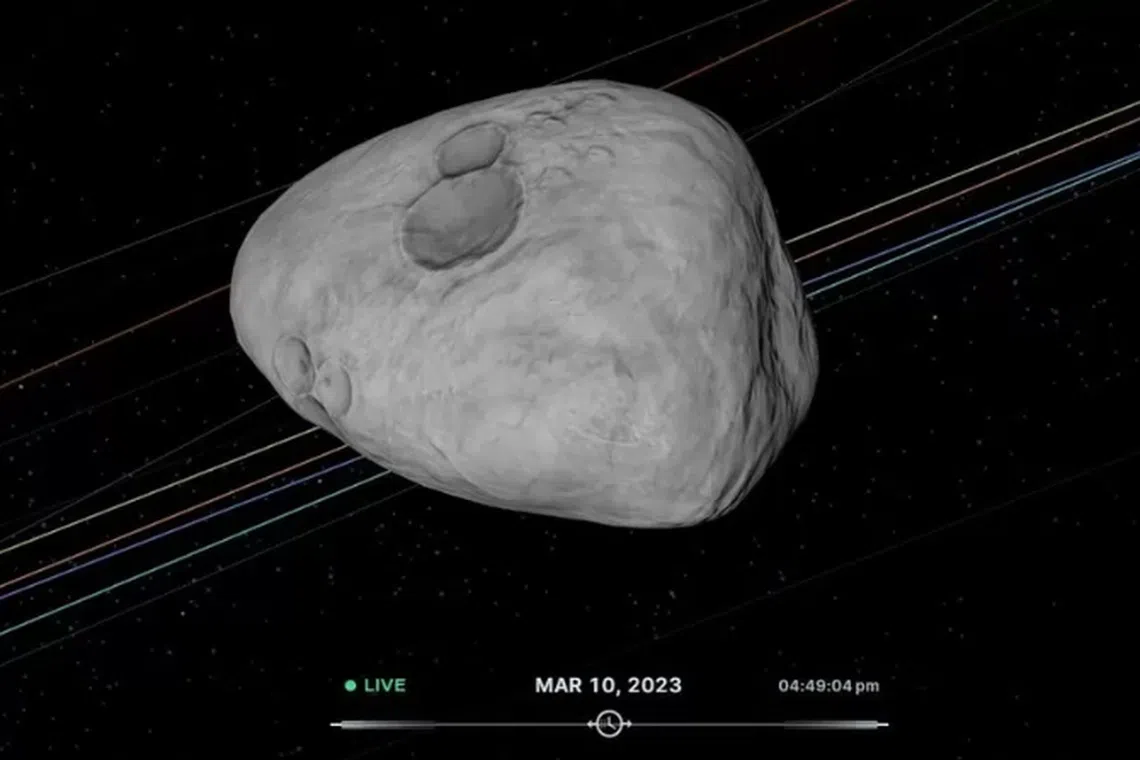Pool-sized asteroid heading for a Valentine’s Day date with Earth
Sign up now: Get ST's newsletters delivered to your inbox

Nasa researchers said the asteroid – dubbed 2023 DW – has only a one in 560 chance of hitting Earth.
PHOTO: NASA
Follow topic:
A newly discovered asteroid the size of an Olympic swimming pool is headed for a Valentine’s Day date with Earth.
But this celestial rendezvous may not happen until 23 years from now.
Researchers at the National Aeronautics and Space Administration said the asteroid – dubbed 2023 DW – has only a one in 560 chance of hitting Earth. The closest it is expected to get to the planet is 1.8 million km, they estimated.
But with the predicted tryst still so far off into the future – Feb 14, 2046 – calculations may change.
This Valentine’s Day impact, if it does happen, will not be an extinction-level event.
The 2023 DW is the only space debris that ranks a 1 on the Torino Impact Hazard Scale.
The scale, which goes from 0 to 10, measures the risk of space objects colliding with Earth. All other objects on the scale rank 0, indicating no risk for impact.
A ranking of 1 means that a collision is extremely unlikely, and no cause for public concern.
“This object is not particularly concerning,” Dr Davide Farnocchia, a navigation engineer at Nasa’s Jet Propulsion Laboratory, told CNN.
By comparison, the asteroid that decimated the dinosaurs 66 million years ago was 12km wide.
Still, an impact from 2023 DW would still send sparks flying, and could cause significant damage if it were to land atop a major city or densely populated area.
Ten years ago, an asteroid half its size exploded over Chelyabinsk in Russia, causing a shock wave that blew out windows across 500 sq km and injured some 1,500 people.
While contact with an asteroid seems unlikely, scientists have been preparing for such an encounter for years.
In October, a Nasa spacecraft successfully slammed into an asteroid some 11 million km from Earth
The mission was devised to determine whether a spacecraft is capable of changing the trajectory of an asteroid through sheer kinetic force, nudging it off course just enough to keep Earth out of harm’s way.
“That is the very reason why we flew that mission, and that mission was a spectacular success,” Dr Farnocchia said.


